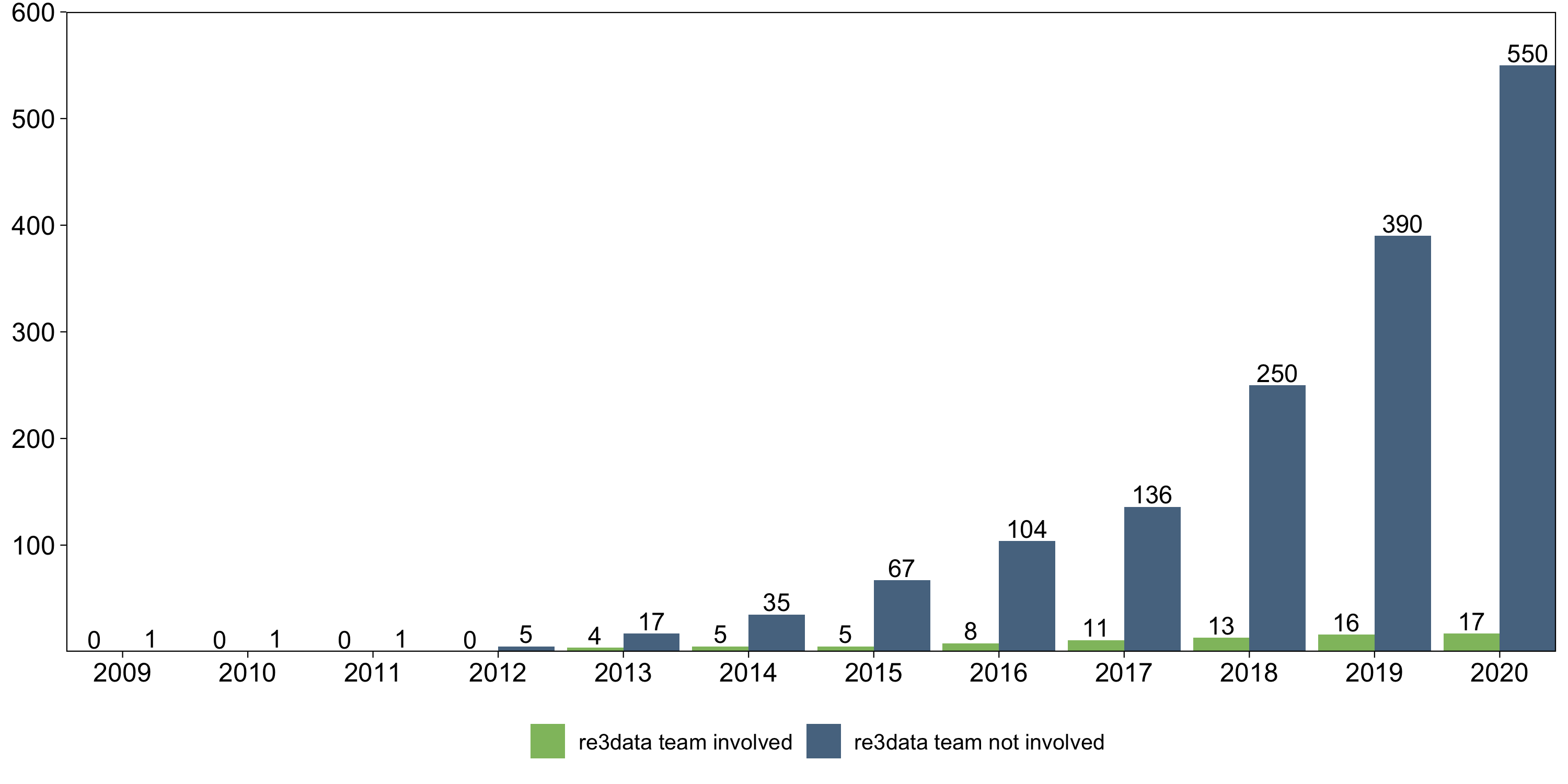The German version of this article has been published on the DINI AG-FIS and AG-E-Pub blog.
As a global directory, re3data describes research data repositories from all scientific disciplines. It lists repositories that enable researchers, funding organizations, publishers and scientific institutions to permanently store research data and ensure access to datasets. The registry has been online since fall 2012 and has received multiple grants from the German Research Foundation (DFG). In March 2013, the two registries re3data and Databib were merged into one service, which has been managed under the auspices of DataCite since late 2015. Since then, the international team of experienced editors has indexed more than 2600 research data repositories based on a comprehensive metadata schema, which is currently being further developed and improved.
The German Research Foundation (DFG) has been funding the project "re3data COREF (Community Driven Open Reference for Research Data Repositories)" for a period of 36 months since January 2020. The aim of the project is to further expand re3data and to network it even more closely with other services and infrastructures as a reference for research data repositories.
re3data is designed as a tool for researchers who are looking for a suitable repository to publish their data. The metadata stored for each repository can also be used for other purposes, such as a data source for monitoring and analyzing the landscape of research data repositories.
In this blog post, we explore how re3data is currently referenced in the scientific literature and highlight various uses of the service.
How is re3data being used?
Data collection and processing
The following analysis examines documents that mention and refer to re3data. These documents have been identified by monitoring several sources continuously, including the bibliographic databases Scopus, Web of Science, and Google Scholar. These references were managed and annotated in Zotero. As of March 5, 2021, the Zotero library comprised 1571 documents in total (available here).
Results
Based on our current findings, re3data is mentioned in documents using at least 25 languages. This shows that the service not only lists repositories worldwide, but is also referenced and used globally. Information on the language used is available for 913 documents in the collection.
The collection includes various types of documents, which are based on BibTex document types. In total, 9 document types are present in the collection. Figure 1 shows the number of documents mentioning re3data per publication year (cumulative), split by document type (1524 documents, excluding documents added in 2021). As the plot shows, the number of publications increased continually. On the one hand, this observation coincides with growing publication rates in general, but it also indicates increasing interest in and continued use of re3data. Article (567) and other (551; including, for example, guidelines from journals or other entities, posters and presentation slides) are the most common document types. The publication year 2021 is not included in this plot. This year, however, various new documents that mention re3data and refer to its use have already been added to the collection.
 Figure 1: the number of documents mentioning re3data per publication year (cumulative), split by document type, excluding 2021
Figure 1: the number of documents mentioning re3data per publication year (cumulative), split by document type, excluding 2021
Documents are manually indexed when they are added to the Zotero collection. Keywords further describe documents, for example whether members of the re3data team are associated with a publication. Figure 2 shows the development of article publications (567 documents) over time, split by involvement of the re3data team.
Overall, most articles were published without the re3data team being involved. This shows that re3data is useful beyond the mere service operation and is perceived or even re-used to a comparatively large extent by others in the scientific community.
 Figure 2: the number of journal articles per publication year (cumulative), split by involvement of the re3data team, excluding 2021
Figure 2: the number of journal articles per publication year (cumulative), split by involvement of the re3data team, excluding 2021
The keywords also indicate whether a document refers to a re3data entry. Overall, 59 documents use re3data to refer to 44 repositories, for example in data availability statements. This shows that there is a need for persistently and unambiguously referring to research data repositories.
Serving many purposes
re3data enables several use cases that go beyond pure discovery of research data repositories. The analysis presented also highlights the wide range of literature and resources that reference the service. Further details and use cases will be presented in a new service model for re3data, which is currently under development and will be published in the near future.
How do you use re3data?
Contact us and let us know how we can support your personal use case!
Email: info@re3data.org



